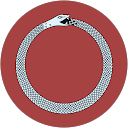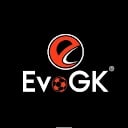Table of Contents
Boost Your Designs with SEO: Essential Tips for Website Designers
As a web designer, your primary goal is to create visually appealing designs. However, ensuring that your designs are discoverable is just as important. Incorporating SEO (Search Engine Optimisation) into your workflow can significantly improve the visibility of your designs and get them in front of the right audience. Here are some essential SEO tips to help your designs rank better and stand out online.
1. Optimise Image Sizes
Large images may look stunning, but they can slow down a website’s load time, negatively impacting SEO. Search engines prioritise fast-loading websites, so it’s essential to compress your image files while maintaining quality. Tools like TinyPNG or JPEG-Optimizer are perfect for balancing image sharpness with smaller file sizes. Fast-loading images make your site more user-friendly and rank higher in search results.
2. Responsive Design
It is essential that your designs adapt across various screen sizes. Responsive design ensures your layouts work seamlessly on mobile, tablet, and desktop devices. Google considers user experience (UX) as a key ranking factor, so ensuring your designs are flexible helps with both SEO and user satisfaction.
3. SEO-Friendly URLs
Make sure your URLs are clean, simple, and filled with relevant keywords. This allows both search engines and users to understand what your design page is about. Avoid long URLs with random characters—keeping them descriptive and keyword-rich improves both SEO and user experience. For example, use www.yoursite.com/creative-designs rather than www.yoursite.com/page123.
4. Meta Tags & Descriptions
Meta titles and descriptions are crucial elements that often go unnoticed by designers. These small snippets show up in search engine results, so they need to be both keyword-rich and engaging. A strong meta title and description will not only improve your search engine ranking but also increase the click-through rate, bringing more traffic to your design pages.
5. Use Header Tags (H1, H2, H3)
Structuring your content using header tags helps search engines crawl and understand your page more effectively. For example, use an H1 for your main title and H2 or H3 for subheadings. This makes your content more accessible for both users and search engines. Well-structured content improves SEO rankings and provides a better user experience by making your designs easier to navigate.
6. Keyword Optimisation
Ensure that your designs (and any accompanying text) incorporate relevant keywords naturally throughout the content. It’s important not to overuse keywords (a practice known as keyword stuffing), but you should include terms your audience is actively searching for. Keywords help search engines understand the content of your page, which in turn improves your ranking.
Incorporating SEO into your design process doesn’t have to be complicated, but it can make a world of difference in how your work gets discovered. Optimising image sizes, structuring content with headers, and using clean URLs are simple yet effective ways to enhance your designs’ visibility.
Want to learn more about optimising your designs for better visibility? At Madhouse Media, we specialise in SEO-optimised design solutions that help businesses stand out online. Check out our graphic design services and SEO solutions to learn how we can help boost your brand’s online presence!











